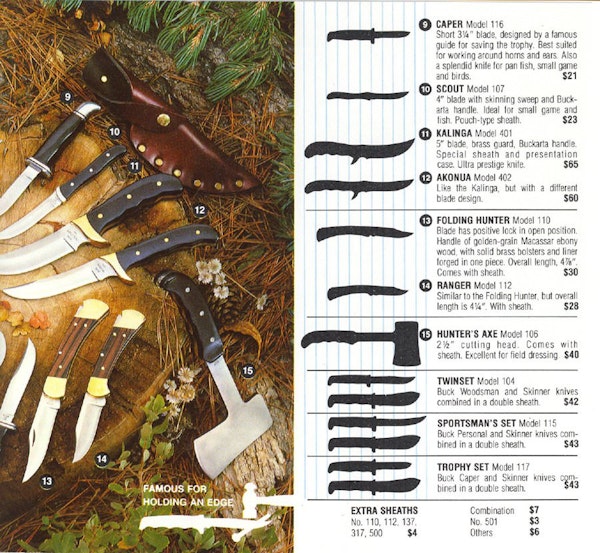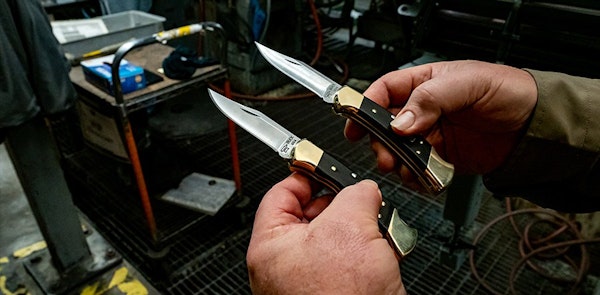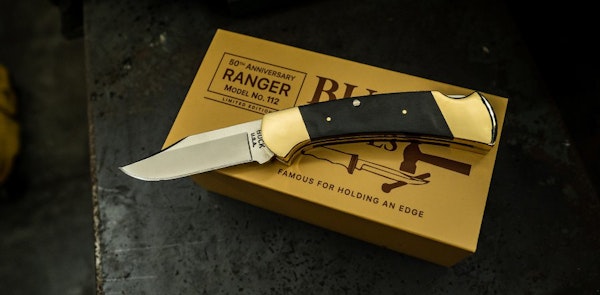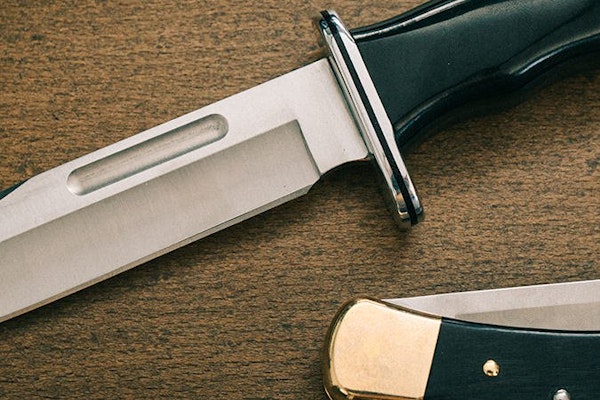Fifty years ago, in 1972, the world was introduced to a few products that would become the benchmark for many of the things we use to this day. Hewlett-Packard released the HP-35—the world’s first scientific calculator. Atari introduced “Pong,” which set the gaming world on its course of current popularity. Ethernet was created, McDonald’s began serving the McMuffin sandwich, Mr. Coffee would become a household staple, and Buck Knives would release the model 112 Ranger.

The result of a skirmish amongst sailors aboard the naval aircraft carrier USS Ranger a few years earlier, Buck was forced to alter its business plan dramatically. When asked in an interview in 2011, Chuck Buck, 3rd generation CEO had this to say about the incident: “In the late ’60s, the aircraft carrier USS Ranger was in port in San Diego when a couple of sailors got into a fight, and they both had 110s. So the captain said, “No more 4-inch blades.” That’s when we developed a 3-inch version of the 110, and of course, we named it the Ranger.”
After eight years of rapidly growing sales of the model 110 Folding Hunter, Buck engineers dreamed up a smaller “little brother” that would become another reliable everyday companion to outdoorsmen everywhere. Developed throughout the year, the model 112 Ranger was finally announced by Buck’s Sales Director, Don Hamm, in a letter to dealers on October 31, 1972. Buck began shipping the 112 to dealers later that year, although it wasn’t officially added to the catalog until 1974.

The first version of the model 112 Ranger was set apart from its “bigger brother” by using a new handle material and incorporating its hook-shaped front bolster, which acted as a pseudo finger guard. It was constructed with a 3” clip point blade made of 440C stainless steel, brass bolsters, liners and rear spacer, stainless steel rocker pin, rocker and spring, and inlays made of finely woven black linen Micarta held to the liners by two brass rivets.

With so much innovation happening in the early 1970s, new ideas kept flowing, and the 112 Ranger was fitted with a sturdier stainless steel rear spacer shortly after its release. The early brass spacer was too soft, and the pressure from the spring would cause it to deform, creating safety and warranty issues. Through the years, more slight alterations to the 112 were made: different handle inlay materials were used, rivet combinations changed, blade steels were upgraded, a nail notch and finger grooves were added, and rounded contours were applied to the handles—but one thing has remained constant—Buck’s commitment to craftsmanship and quality.
The success of the model 112 Ranger is no secret. Its legacy would not have had the staying power over the last half-century if not for Buck’s amazing patrons.

In celebration of its historic longevity and to the patrons it owes its success to, Buck Knives proudly introduces the 112 Ranger 50th Anniversary Collection. Knives specially created for this celebration will only be made in 2022. Featuring a unique anniversary blade stamp, genuine Crelicam ebony inlays, and a one-of-a-kind medallion, the 50th anniversary 112 Ranger will be available with or without finger grooves.
A Legacy, limited-edition tribute model is also available, limited to 1,000 units. The 50th Anniversary Legacy edition is modeled after the original version but with the more secure stainless steel rear spacer. It features a 3” 440C stainless steel clip point blade, squared brass bolsters, and Micarta inlays.
Like the very first 112 Rangers purchased in 1972, these knives will inspire collectors for the next 50 years and beyond.




